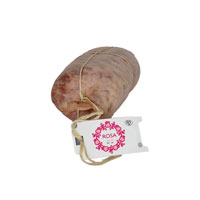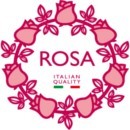COTECHINO
A particular sausage that comes from the pork
Cotechino (whose name derives from the rind, one of the basic ingredients of the dough, editor's note) is one of the products made from pork, on that day of celebration with a thousand flavors that I told you about in a previous post. If you missed it, read the post on the day of the pig.
It is made by mixing mixed meats cut into small pieces, throat, bacon and rind.
The result is a mixture that is flavored with spices, salt, nutmeg, pepper and stuffed into natural casings.
Then it is placed in suitable rooms where drying takes place which lasts about 24 hours.
Subsequently, it is stored in a dark and humid place.
THE HISTORY OF COTECHINO
It is a food with a long history behind it.
Tradition has it that this typical sausage was born in 1511 during the siege of Mirandola, a town in the Modena area, by the troops of Pope Julius II della Rovere.
On that occasion, the citizens of the court of Pico della Mirandola aware of the imminent fall of their city, being at the end of their strength and not wanting to hand over the pigs to the enemy, the last food resource they had left to eat before dying of hunger. , created the cotechino with the aim of preserving the pork at its best for a long period of time.
Towards the end of the 1700s this product began to spread outside the Modena area.
Since it was a poor food, at the time, it was eaten accompanied by minestrone or a legume soup.
Finally, before concluding this part dedicated to the history of this famous sausage, I tell you a further curiosity: you must know that the recipe of the dough has undergone, over time, several changes before arriving at the current formulation that led , in 2009, cotechino to receive the IGP (Protected Geographical Indication) designation.

COOKING THE COTECHINO
Cotechino is a food that certainly cannot be missing on our table during the Christmas holidays.
Although it can be enjoyed all year round due to its organoleptic characteristics as it is a highly energetic product that guarantees a good supply of unsaturated fats, ie good fats, and proteins. In addition, it has a good content of zinc, iron and B vitamins.
The classic combination with lentils was born a long time ago. It is a tradition dating back to the time of the ancient Romans who consumed these tasty legumes during the end-of-year celebrations.
In ancient Rome it was customary to give lentils inside the "scarsella", a leather bag used to store coins and worn around the neck or belt.
The Romans did it for two reasons: the lentils, being rounded, reminded them of the shape of the coins and since, during cooking, they increase in volume, the easy association of giving them as a wish of economic abundance for those who received them was born in them.
That said, I want to give you two of my favorite recipes:
Recipe of cotechino with lentils
Ingredients:
- 500 grams of lentils soaked for 24 hours in plenty of warm water.
- A big and tasty cotechino.
- 40 grams of coarsely chopped fat and lean bacon.
- One chopped onion.
- Some sage leaves.
- Salt
How to cook cotechino with lentils:
Prick the cotechino with a needle and soak it with the lentils for 12 hours.
Then drain it and rinse the lentils very well.
Meanwhile, sauté the bacon, onion and sage leaves in a pan.
As soon as the sauce has browned, add the well-drained lentils, cover everything flush with fresh water and season with salt.
Leave the pan on the stove to cook for an hour.
Separately, cook the cotechino.
Change the water twice by replacing it with clean, hot water.
And leave everything on the stove to cook for an hour.
Once cooked, take the cotechino out of its water, put it together with the lentils and continue cooking over moderate heat for a second hour.
Once the time has elapsed, all you have to do is serve the boiling cotechino at the table, sliced, soaked in the cooking juices and surrounded with the lentils.
Recipe of cotechino with beans
Ingredients:
- A big and tasty cotechino.
- Salted pork half jaw
- 2 very fresh pork tails
- 200 grams of fresh pork rinds
- 800 grams of freshly picked cannellini beans, well cleaned
- 3 cloves of garlic with the peel
- One onion staked with 2 cloves
- A mince consisting of 100 grams of lean bacon
- Half onion
- 2 internal stalks of celery
- A sprig of parsley
- 1 kilo of finely chopped tomato pulp
- 30 grams of butter
- Salt and freshly ground black pepper
How to cook cotechino with beans:
Soak the cotechino and beans for 12 hours in separate waters.
Prick the cotechino in several places and cook it for a couple of hours in lightly salted boiling water..
Blanch the fresh rinds, half jaws and tails separately for a quarter of an hour.
Drain and cut the rinds into square pieces, while the jaw and the tails cut into logs.
Put the well washed and drained beans, the cotechino, the jaw and tail logs, the pieces of rind, the garlic cloves and the onion in an appropriately sized terracotta pot.
Fill the pot with plenty of cold water and season it with salt and pepper.
Start cooking over moderate heat and carry it on for a couple of hours.
During cooking, using a wooden ladle (absolutely necessary in order not to stop the cooking of the beans) remove the meats as they are cooked to the right point.
Remove the onion and garlic.
Put the butter and the mince in a large terracotta pan.
Let it brown well, then add the tomato pulp, season with salt and pepper and continue cooking over moderate heat for half an hour.
At this point, slice the cotechino and put it in the sauce.
Add the rinds and the jaw and tail logs, well drained, and top it all off with the well-drained beans.
Leave everything to flavor together, over moderate heat, stirring carefully.
If the sauce is too thick, bring it to the desired consistency with a few spoonfuls of the liquid in which the beans were cooked.
Serve it piping hot.
Recipes taken from "La Pacciada" by Gianni Brera and Luigi Veronelli - Arnoldo Mondadori Editore I edition May 1973.
CONCLUSION
I hope you enjoyed this journey to discover one of the main foods of the culinary tradition of Emilia Romagna. If so, don't miss the next posts!
Ciao and Bye Bye,
Mamma Rosa


